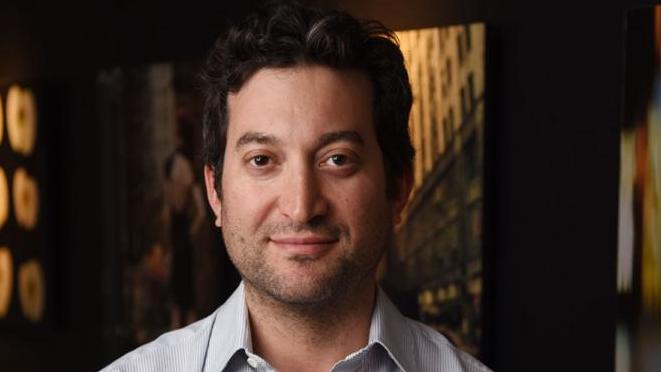Rising (Shutter) Stock
It might not seem obvious, since the Shutterstock founder and CEO has spent his post-Columbia Engineering career taking the stock photo company he founded into new and bigger places and racking up accolades as he does it.
Shutterstock, founded in 2003, is one of the leading stock image companies in the world, offering more than 150 million royalty-free stock photographs, illustrations, and video clips to its users. The firm-which went public on the NYSE in 2012-employs 1,000 people around the world, takes in $500 million in annual revenue, and sells more than five images every second. In the last five years, the company launched the high-end Offset collection, signed high-profile partnerships with the Associated Press and Penske Media Corporation, and acquired a number of other firms, including music library PremiumBeat; photo agency Rex Features; WebDAM, a cloud-based digital asset management platform for businesses; and, in June 2017, custom content platform Flashstock. And Oringer himself has been listed in Crain's New York Business's 2013 "40 Under 40" issue, named New York Technology Entrepreneur of the Year by Ernst & Young in 2012, and ranked among the Silicon Alley 100 by Business Insider in 2009.
But embracing failure (not coincidentally the subject of Oringer's 2014 Engineering Class Day address to graduates) has been what's empowered him to take a chance.
Shutterstock was born from a need Oringer discovered at another company he had founded. In selling and marketing for that company, Oringer had found that stock images that both depicted what he needed shown and were available for commercial use were hard to come by-in fact, he had amassed a sizable database of selfshot images when nothing else could be found.
"I was a software developer, making small, personal firewalls, pop-up blockers-things that today we have in our browsers, but that didn't exist back in 1997," Oringer said. "But in 2002 and 2003, everything I was building was built into Internet Explorer, and it put me out of business."
The ending of that business gave him an opening to focus on creating what became Shutterstock.
"I got really interested in the subscription business. It's really hard to buy commercially released stock images"-for example, a person sitting in front of a computer screen looking frustrated by all the pop-ups there-he said. "For the products I was building, you can't just take any image, so I was building my own library of commercially released, really specific images."
That insight was a prescient one, as well as a global one. Today, Oringer shared, 70 percent of the company's business comes from outside the United States.
"We offer service in 20 different languages. We're pretty good at being a global company," he said.
Oringer said his time at Columbia School of Engineering gave him experience in the sort of juggling that entrepreneurs and CEOs do daily.
"There were classes where I learned a lot, and on the side, I could run my business, and I was able to do both at once," he said.
Another thing engineering taught him about entrepreneurship? Know what you don't know.
"It gives you a pretty unique perspective to be an engineer and a CEO. You want to surround yourself with people with complementary skill sets who are good at the things that you're not good at," he said. "My team is filled with people who are better than I am at different things."
And, of course, to embrace the upside of failure.
"Each individual thing we do at Shutterstock is to get the next customer in the door. We try and we experiment a lot," he said. "We fail at things every day. The trick is to take enough calculated risks that the outcomes are worth it."

A former software developer, SEAS alum Jon Oringer started one of the world’s most successful stock photo companies with a database of self-shot images. (Courtesy of Jon Oringer)
Each individual thing we do at Shutterstock is to get the next customer in the door. We try and we experiment a lot. We fail at things every day. The trick is to take enough calculated risks that the outcomes are worth it.
